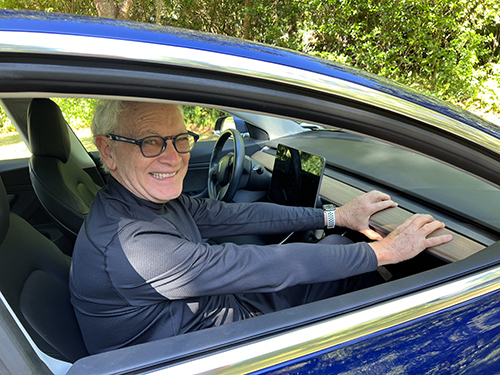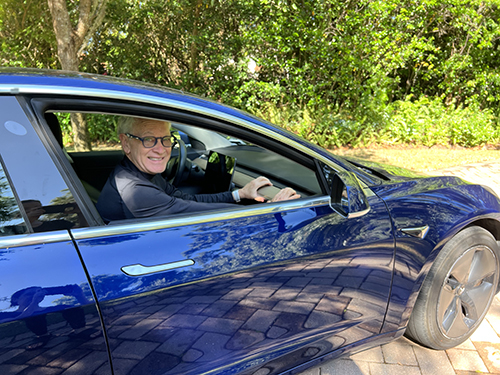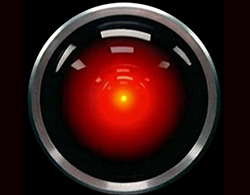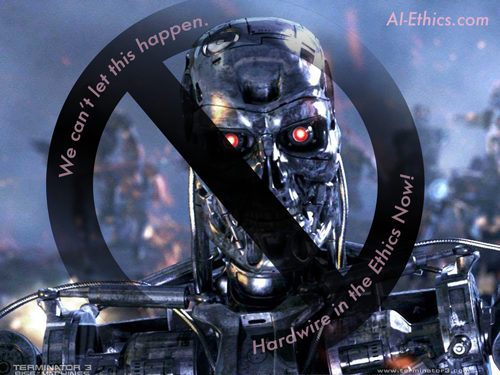
This blog is the first part of my review of one of the most interesting law review articles I’ve read in a long time, Robophobia. Woods, Andrew K., Robophobia, 93 U. Colo. L. Rev. 51 (Winter, 2022). Robophobia provides the first in-depth analysis of human prejudice against smart computer technologies and its policy implications. Robophobia is the next generation of technophobia, now focusing on the human fear of replacing human decision makers with robotic ones. For instance, I love technology, but am still very reluctant to let an AI drive my car. My son, on the other hand, loves to let his Tesla take over and do the driving, and watch while my knuckles go white. Then he plays the car’s damn fart noises and other joke features and I relax. Still, I much prefer a human at the wheel. This kind of anxiety about advanced technology decision making is at the heart of the law review article.
Technophobia and its son, robotphobia, are psychological anxieties that electronic discovery lawyers know all too well. Often it is from first-hand experience with working with other lawyers. This is especially true for those who work with active machine learning. Ediscovery lawyers tire of hearing that keyword search and predictive coding are not to be trusted, that humans reviewing every document is the gold standard. Professor Woods goes into AI and ediscovery a little bit in Robotphobia. He cites our friends Judge Andrew Peck, Maura Grossman, Doug Austin and others. But that is only a small part of this interesting technology policy paper. It argues that a central question now facing humanity is when and where to delegate decision-making authority to machines. This question should be made based on the facts and reason, not on emotions and unconscious prejudices.

To answer this central question we need to recognize and overcome our negative stereotypes and phobias about AI. Robots are not all bad. Neither are people. Both have special skills and abilities and both make mistakes. As should be mentioned right away, Professor Woods in Robophobia uses the term “robot” very broadly to include all kinds of smart algorithms, not just actual robots. We need to overcome our robot phobias. Algorithms are already better than people at a huge array of tasks, yet we reject them for not being perfect. This must change.
Robotphobia is a decision-making bias. It interferes with our ability to make sensible policy choices. The law should help society to decide when and what kind of decisions should be delegated to the robots, to balance the risk of using a robot compared to the risk of not using one. Robophobia is a decision-making bias that interferes with our ability to make sensible policy choices. In my view, we need to overcome this bias now, to delegate responsibly, so that society can survive the current danger of misinformation overload. See eg. my blog, Can Justice Survive the Internet? Can the World? It’s Not a Sure Thing. Look Up!
This meta review article (review of a law review) is in several parts, each fairly short (for me), largely because the Robophobia article itself is over 16,000 words and has 308 footnotes. My meta-review will focus on the parts I know best, the use of artificial intelligence in electronic discovery. The summary will include my typical snarky remarks to keep you somewhat amused, and several cool quotes of Woods, all in an attempt to entice some of you to take the deep dive and read Professor Woods’ entire article. Robophobia is all online and free to access at the University of Colorado Law Review website.
Professor Andrew Woods

Andrew Keane Woods is an Professor of Law at the University of Arizona College of Law. He is a young man with an impressive background. First the academics, since, after all, he is a Professor:
- Brown University, A.B. in Political Science, magna cum laude, 2002;
- Harvard Law School, J.D., cum laude (2007);
- University of Cambridge, Ph.D. in Politics and International Studies (2012);
- Stanford University, Postdoctoral Fellow in Cybersecurity (2012—2014).
As to writing, he has at least twenty law review articles and book chapters to his credit. Aside from Robophobia, some of the most interesting ones I see on his resume are:
- Artificial Intelligence and Sovereignty, DATA SOVEREIGNTY ALONG THE SILK ROAD (Anupam Chander & Haochen Sun eds., Oxford University Press, forthcoming);
- “Internet Speech Will Never Go Back to Normal,” (with Jack Goldmsith) THE ATLANTIC (Apr. 25, 2020).
- “Our Robophobia,” LAWFARE (Feb. 19, 2020).
- Keeping the Patient at the Center of Machine Learning in Healthcare, 20 AMERICAN JOURNAL OF BIOETHICS 54 (2020) (w/ Chris Robertson, Jess Findley, Marv Slepian);
- Mutual Legal Assistance in the Digital Age, THE CAMBRIDGE HANDBOOK OF SURVEILLANCE LAW (Stephen Henderson & David Gray eds., Cambridge University Press, 2020);
- Litigating Data Sovereignty, 128 YALE LAW JOURNAL 328 (2018).
Bottom line, Woods is a good researcher (of course he had help from a zillion law students, whom he names and thanks), and a deep thinker on AI, technology, privacy, politics and social policies. His opinions deserve our careful consideration. In my language, his insights can help us to move beyond mere information to genuine knowledge, perhaps even some wisdom. See eg. my prior blogs, Information → Knowledge → Wisdom: Progression of Society in the Age of Computers (2015); AI-Ethics: Law, Technology and Social Values (website).
Quick Summary of Robophobia

Robots – machines, algorithms, artificial intelligence – already play an important role in society. Their influence is growing very fast. Robots are already supplementing or even replacing some human judgments. Many are concerned with the fairness, accuracy, and humanity of these systems. This is rightly so. But, at this point, the anxiety about machine bias is crazy high. The concerns are important, but they almost always run in one direction. We worry about robot bias against humans. We do not worry about human bias against robots. Professor Woods shows that this is a critical mistake.
It is not an error because robots somehow inherently deserve to be treated fairly, although that may someday be true. It is an error because our bias against nonhuman deciders is bad for us humans. A great example Professor Woods provides is self-driving cars. It would be an obvious mistake to reject all self-driving cars merely because one causes a single fatal accident. Yet this is what happened, for a while at least, when an Uber self-driving car crashed into a pedestrian in Phoenix. See eg. FN 71 of Robophobia: Ryan Randazzo, Arizona Gov. Doug Ducey Suspends Testing of Uber Self-Driving Cars, Ariz. Republic, (Mar. 26, 2018). This kind of one-sided perfection bias ignores the fact that humans cause forty thousand traffic fatalities a year, with an average of three deaths every day in Arizona alone. We tolerate enormous risk from our fellow humans, but almost none from machines. That is flawed, biased thinking. Yet, even rah-rah techno promoters like me suffer from it.

Professor Woods shows that there is a substantial literature concerned with algorithmic bias, but until now, its has been ignored by scholars. This suggests that we routinely prefer worse-performing humans over better-performing robots. Woods points out that we do this on our roads, in our courthouses, in our military, and in our hospitals. As he puts it in his Highlights section, that precede the Robophobia article itself, which I am liberally paraphrasing in this Quick Summary: “Our bias against robots is costly, and it will only get more so as robots become more capable.“
Robophobia not only catalogs the many different forms of anti-robot bias that already exist, which he calls a taxonomy of robophobia, it also suggests reforms to curtail the harmful effects of that bias. Robophobia provides many good reasons to be less biased against robots. We should not be totally trusting mind you, but less biased. It is in our own best interests to do so. As Professor Woods puts it, “We are entering an age when one of the most important policy questions will be how and where to deploy machine decision-makers.“
Note About “Robot” Terminology
Before we get too deep into Robophobia, we need to be clear about what Professor Woods means here. We need to define our terms. Woods does this in the first footnote where he explains as follows (HAL image added):

The article is concerned with human judgment of automated decision-makers, which include “robots,” “machines,” “algorithms,” or “AI.” There are meaningful differences between these concepts and important line-drawing debates to be had about each one. However, this Article considers them together because they share a key feature: they are nonhuman deciders that play an increasingly prominent role in society. If a human judge were replaced by a machine, that machine could be a robot that walks into the courtroom on three legs or an algorithm run on a computer server in a faraway building remotely transmitting its decisions to the courthouse. For present purposes, what matters is that these scenarios represent a human decider being replaced by a nonhuman one. This is consistent with the approach taken by several others. See, e.g., Eugene Volokh, Chief Justice Robots, 68 DUKE L.J. 1135 (2019) (bundling artificial intelligence and physical robots under the same moniker, “robots”); Jack Balkin, 2016 Sidley Austin Distinguished Lecture on Big Data Law and Policy: The Three Laws of Robotics in the Age of Big Data, 78 OHIO ST. L.J. 1217, 1219 (2017) (“When I talk of robots … I will include not only robots – embodied material objects that interact with their environment – but also artificial intelligence agents and machine learning algorithms.”); Berkeley Dietvorst & Soaham Bharti, People Reject Algorithms in Uncertain Decision Domains Because They Have Diminishing Sensitivity to Forecasting Error, 31 PSYCH. SCI. 1302, 1314 n.1 (2020) (“We use the term algorithm to describe any tool that uses a fixed step-by-step decision-making process, including statistical models, actuarial tables, and calculators.”). This grouping contrasts scholars who have focused explicitly on certain kinds of nonhuman deciders. See, e.g., Ryan Calo, Robotics and the Lessons of Cyberlaw, 103 CALIF. L. REV. 513, 529 (2015) (focusing on robots as physical, corporeal objects that satisfy the “sense-think-act” test as compared to, say, a “laptop with a camera”).
I told you Professor Woods was a careful scholar, but wanted you to see for yourself by a full quote of footnote one. I promise to exclude footnotes and his many string cites going forward in this blog article, but I do intend to frequently quote his insightful, policy packed language. Did you note his citation to Chief Justice Roberts in his explanation of “robophobia”? I will end this first part of my review of Robophobia with a side excursion into the Justice Robert cite. It provides a good example of irrational robot fears and insight into the Chief Justice himself, which is something I’ve been considering a lot lately. See eg. my recent article The Words of Chief Justice Roberts on JUDICIAL INTEGRITY Suggest the Supreme Court Should Step Away from the Precipice and Not Overrule ‘Roe v Wade’.
Chief Justice Roberts Told High School Graduates in 2018 to “Beware the Robots”

The Chief Justice gave a very short speech at his daughter’s private high school graduation. There he demonstrated a bit of robot anxiety, but did so in an interesting manner. It bears some examination before we get into the substance of Woods’ Robophobia article. For more background on the speech see eg. Debra Cassens Weiss, ‘Beware the robots,’ chief justice tells high school graduates (June 6, 2018). Here are the excerpted words of Chief Justice John Roberts:
Beware the robots! My worry is not that machines will start thinking like us. I worry that we will start thinking like machines. Private companies use artificial intelligence to tell you what to read, to watch and listen to, based on what you’ve read, watched and listened to. Those suggestions can narrow and oversimplify information, stifling individuality and creativity.
Any politician would find it very difficult not to shape his or her message to what constituents want to hear. Artificial intelligence can change leaders into followers. You should set aside some time each day to reflect. Do not read more, do not research more, do not take notes. Put aside books, papers, computers, telephones. Sit, perhaps just for a half hour, and think about what you’re learning. Acquiring more information is less important than thinking about the information you have.”
Aside from the robot fear part, which was really just an attention grabbing speech thing, I could not agree more with his main point. We should move beyond mere information, we should take time to process the information and subject it to critical scrutiny. We should transform from mere information gatherers, into knowledge makers. My point exactly in Information → Knowledge → Wisdom: Progression of Society in the Age of Computers (2015). You could also compare this progression with an ediscovery example, moving from just keyword search to predictive coding.
Part Two of my review of Robophobia is coming soon. In the meantime, take a break and think about any fears you may have about AI. Everyone has some. Would you let the AI drive your car? Select your documents for production? Are our concerns about killer robots really justified, or maybe just the result of media hype? For more thoughts on this, see AI-Ethics.com. And yes, I’ll be Baaack.

Ralph Losey Copyright 2022 – ALL RIGHTS RESERVED


